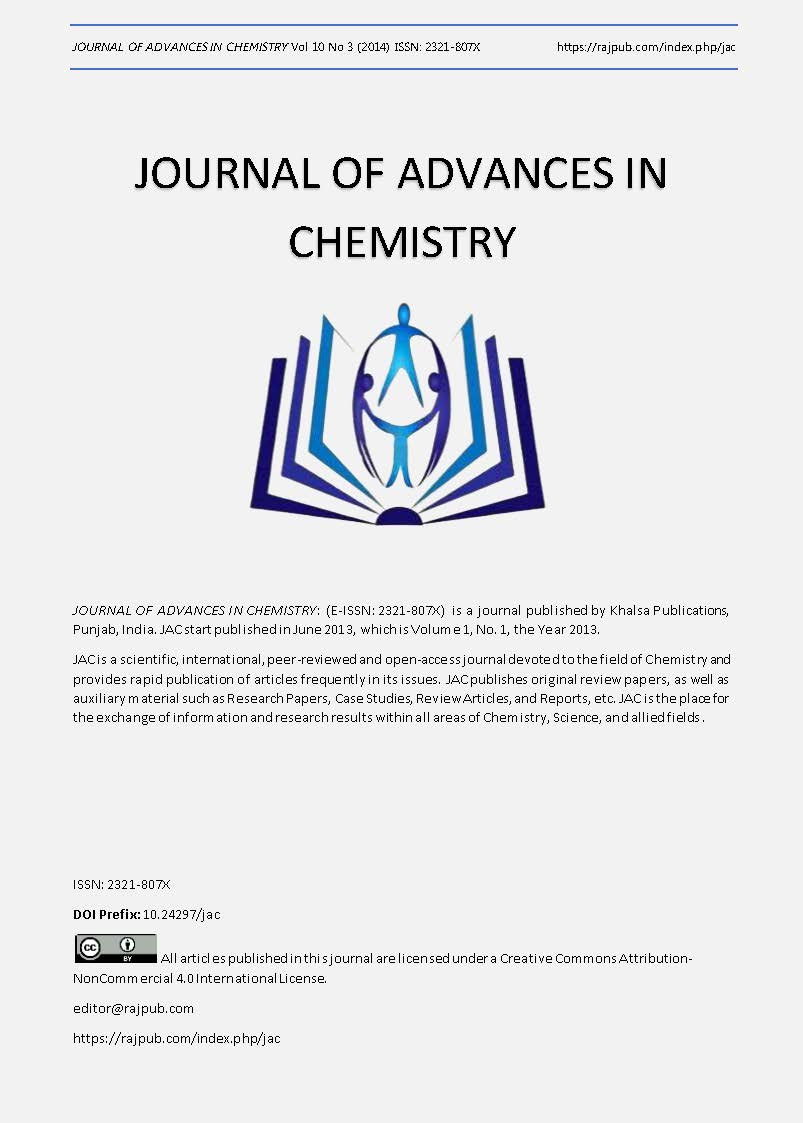EFFECT OF EXTRACTION SYSTEM AND REFINING ON THE STEROL COMPOSITION OF POMACE-OLIVE OILS
DOI:
https://doi.org/10.24297/jac.v10i3.6657Keywords:
Refining, extraction, pomace-olive oil, sterol, limeAbstract
Research has been carried out to ascertain the effects of refining and different processing systems on the sterol compositions of pomace-olive oils and especially on the Δ-7-stigmastenol. The International Olive Council imposes limits or ranges for each type of sterol based on the natural levels found in traditional olive oil varieties. The required sterol profile (as % of total sterols) is for the ∆-7-stigmastenol 0.5%. A high content of this compound is non-in compliance with the International Olive Oil Standards and is at the origin of major problems at the level of the exportation because it gives the impression of the presence of seed oil in this olive oil.
The sterol composition of the refined pomace-olive oils is non-in conformity with these international standards, because the percentage of Δ-7-stigmastenol exceeds slightly the tolerated limits. This percentage is more important mainly when extraction of oil is with the continuous chain. In refining, the neutralization step is with soda. The content of this compound remain invariable after neutralization by lime.
Downloads
References
[2] Perrin, J.L. 1992. Minor Compounds and Natural Antioxidants of Olive and Its Oil, Rev. Fr. Corps Gras. 39, 25–32.
[3] Ferrari, R.A., Schulte, W., Esteves, W., Brühl, L. and Mukherjee, K.D. 1996. Minor constituents of oils during industrial processing. J. Am. Oil Chem. Soc. 73, 587-592.
[4] Jung, M.Y., Yoon, S.H., Min, D.B. 1989. Effects of Processing Steps on the Contents of Minor Compounds and Oxidation of Soybean Oil. J. Am. Oil Chem. Soc. 60, 118–120.
[5] Rabascall, N. H., Riera, J. B. 1987. Variaciones del contenido en tocoferoles y tocotrienoles durante los procesos de obtencione hidrogenacion de aceites comestibles. Grasas Aceites. 38, 145-148.
[6] Cimato, A. 1990. Olive oil maturation. Olivae. 31, 20-22.
[7] Mandl, A., Reich, G., Lindner, W. 1999. Detection of adulteration of pumpkin seed oil by analysis of content and composition of specific phytosterols. Eur. Food Res. Technol. 209, 400-406.
[8] International standard. 2003. Trade standard applying to olive oils and olive pomace oils. COI/T.15, Doc NO. 3.
[9] Essid, K., Trabelsi, M., Frikha, M.H. 2006. Effects of Neutralization with Lime on the Quality of Acid Olive Oil. JAOCS. 83, 10-15.
[10] International standard. 1998. Animal and vegetable fats and oils. Determination of peroxide index. ISO 3960, 3rd ed.
[11] International standard. 1996. Animal and vegetable fats and oils. Determination of acid value and acidity. ISO 660, 2nd ed.
[12] International standard. 1996. COI/T-20, Doc. No. 19.
[13] International Oleicol Council. 1997. Determination of Tocopherols and Tocotrienols in Vegetable Oils and Fats by HPLC, 5th ed.
[14] International standard. 1992. Determination of the Composition and Content of Sterols by Capillary-Column Gas Chromatography; COI /T.20, Doc. NO.10.
[15] AOCS, Oil Stability Index (OSI) 1997. Official Methods and Recommended Practices of the AOCS, 5th edn., AOCS Press, Champaign, Method Cd 12-92.
[16] Fukuzumi, K. 1980. Aging in Relation to Lipids: Lipoperoxide, Essential Fatty Acids, Vitamin E. Oleagineux. 35, 511–514.
[17] International Oleicol Council. 1990. Amélioration de la Qualité d’Huile d’Olive; Madrid.
[18] Verleyen, T., Kamal-Eldin, A., Dobarganes, C., Verhé, R., Dewettinck, K.; Huyghebaert, A. 2001. Modeling of a-Tocopherol Loss and Oxidation Products Formed During Thermoxidation in Triolein and Tripalmitin Mixtures. Lipids. 36, 719–726.
[19] Di Giovacchino, L., Solinas, M., Miccoli, M. 1994. Effect of extraction systems on the quality of virgin olive oil. J.A.O.C.S. 71, 1189-1194.
[20] Antonopoulos, K., Valet, N., Spiratos, D., Siragakis, G. 2006. Olive oil and pomace olive oil processing. Grasasy Aceites. 57, 56-67.
[21] Ferrari, R.A., Esteves, W., Mukherjee, K.D., Schulte, E. 1997. Alteration of sterols and steryl esters in vegetable oils during industrial refining. J. Agric. Food Chem. 45, 4753-4757.
[22] Ferrari, R.A., Schulte, E., Esteves, W., Brühl, L., Mukherjee, K.D. 1996. Minor constituents of vegetable oils during industrial processing. J. Am. Oil Chem. Soc. 73, 587-592.
[23] Grob, K., Giuffré, A.M., Leuzzi, U., Mincione, B. 1994b. Recognition of adulterated oils by direct analysis of the minor components. Fat Sci. Technol. 96, 286-290.
[24] Gordon, M.H., Griffith, R.E. 1992b. Steryl ester analysis as an aid to the identification of oils in blends. Food Chem. 43, 71-78.
Downloads
Published
How to Cite
Issue
Section
License
 All articles published in Journal of Advances in Linguistics are licensed under a Creative Commons Attribution 4.0 International License.
All articles published in Journal of Advances in Linguistics are licensed under a Creative Commons Attribution 4.0 International License.




